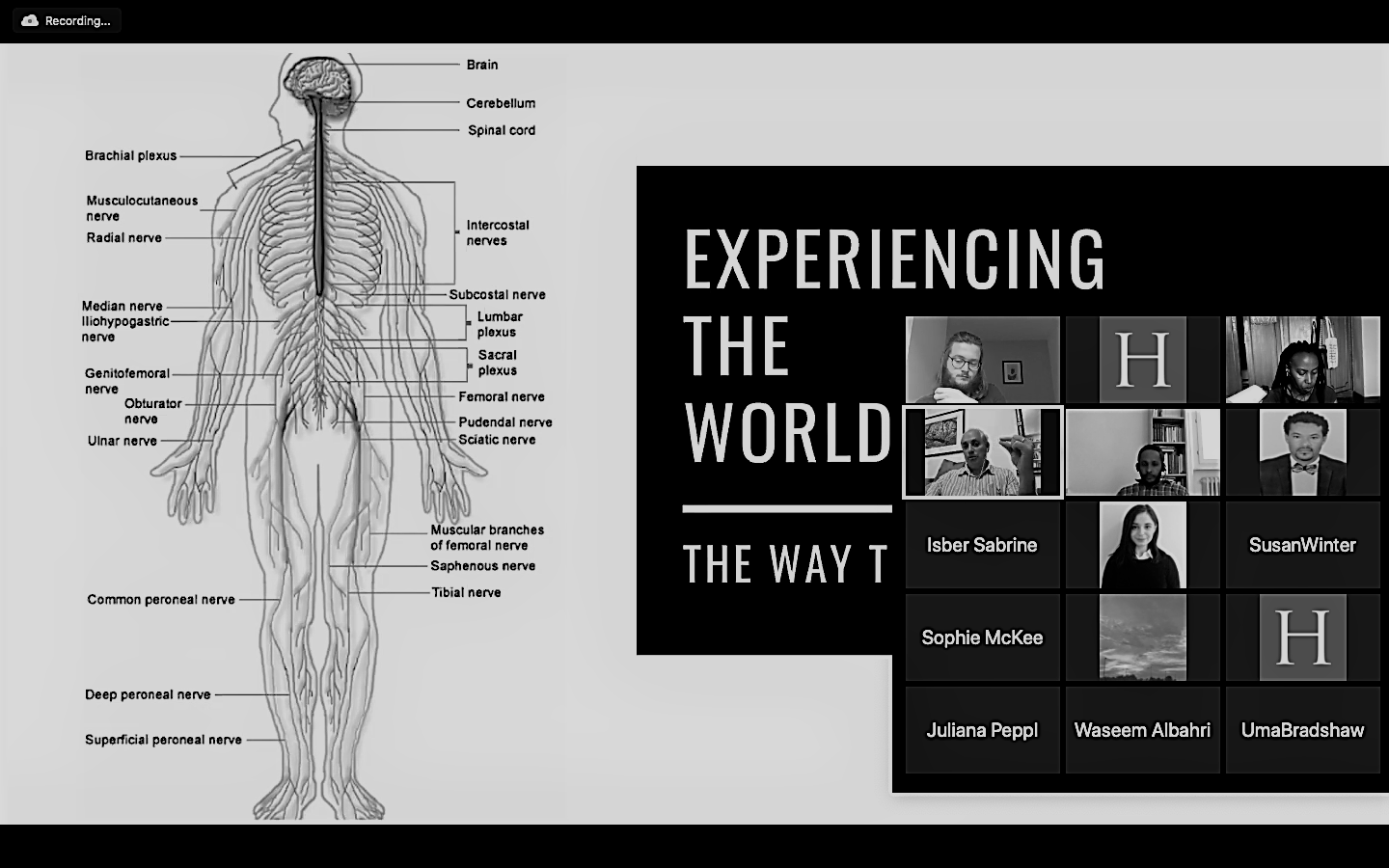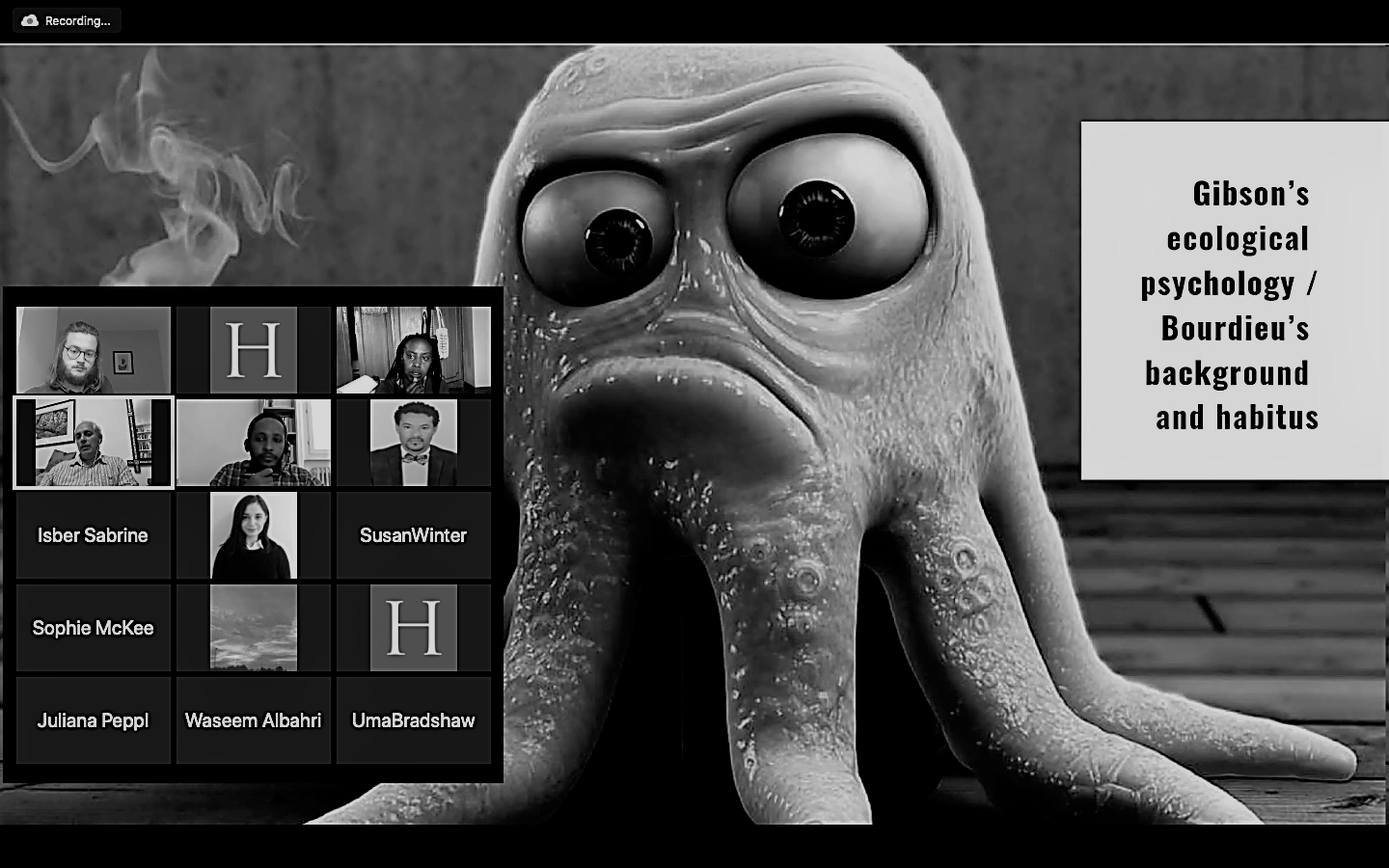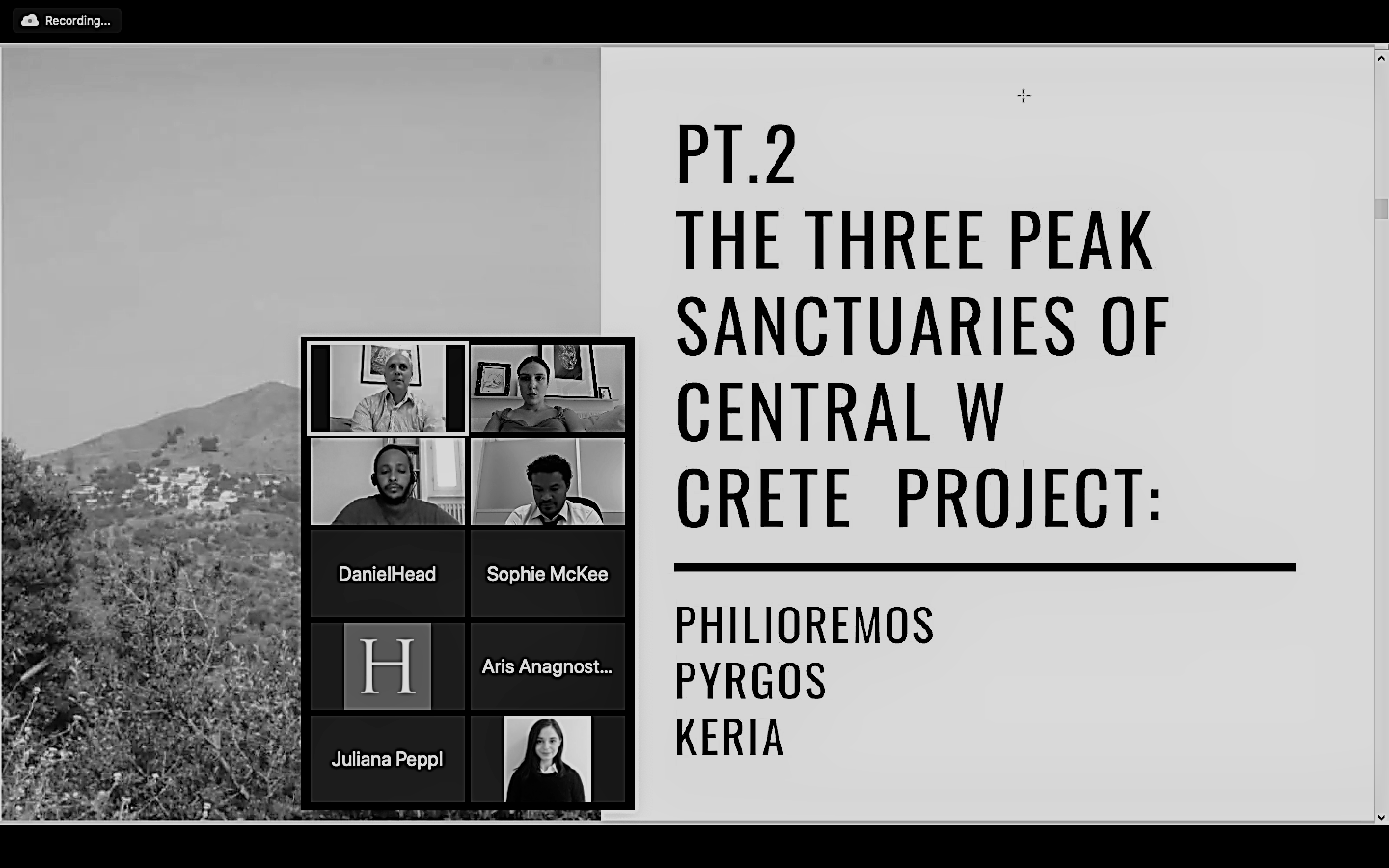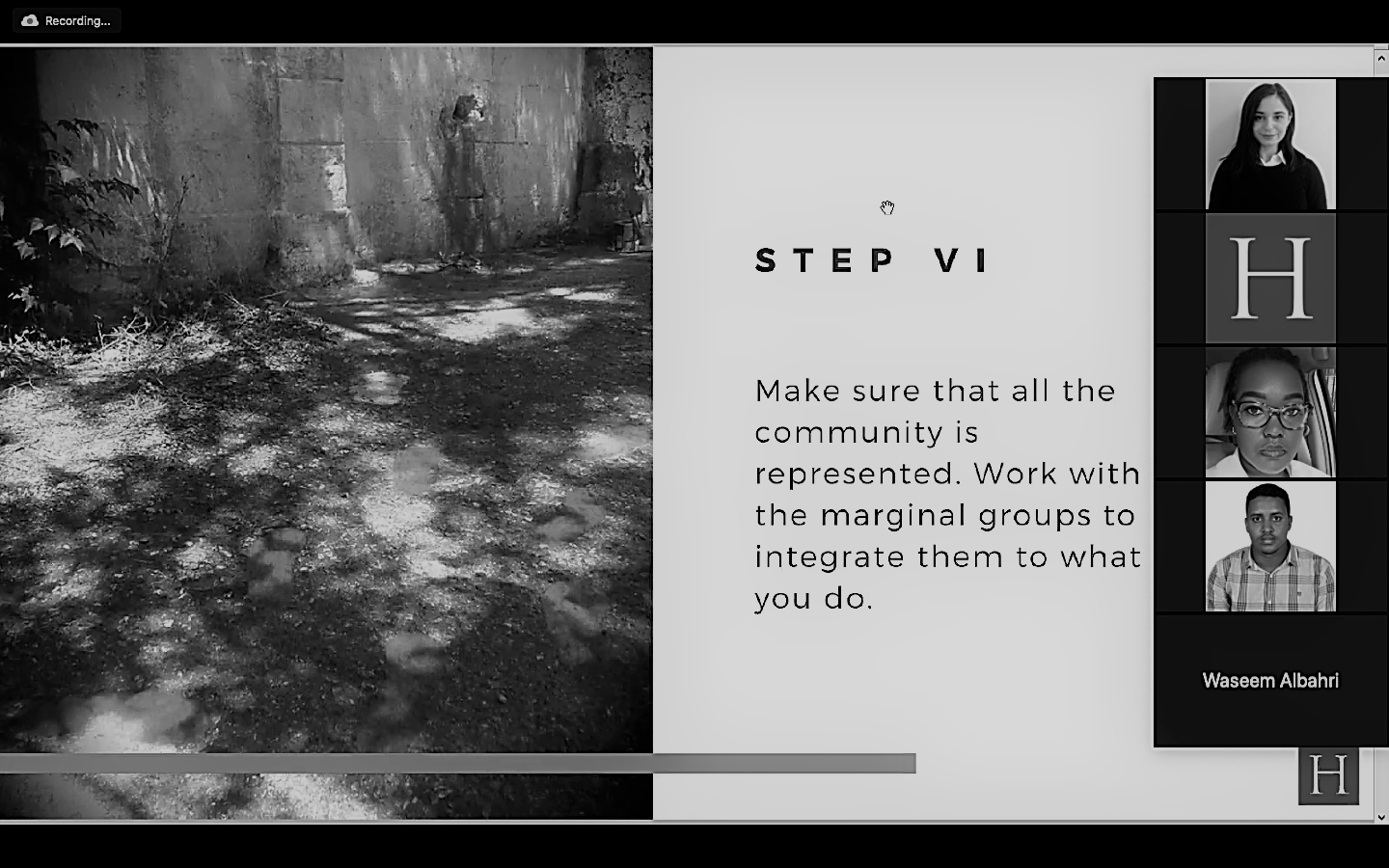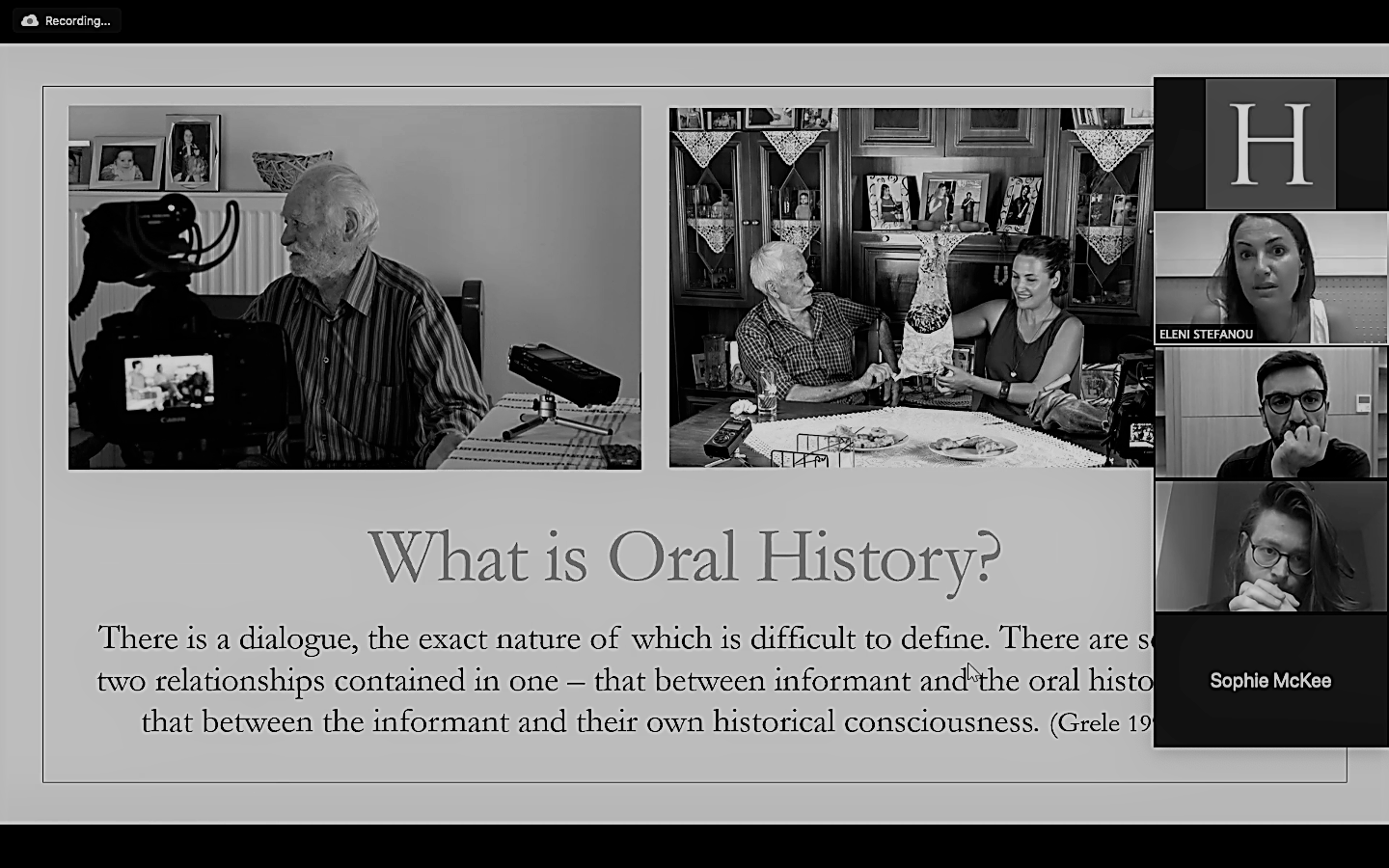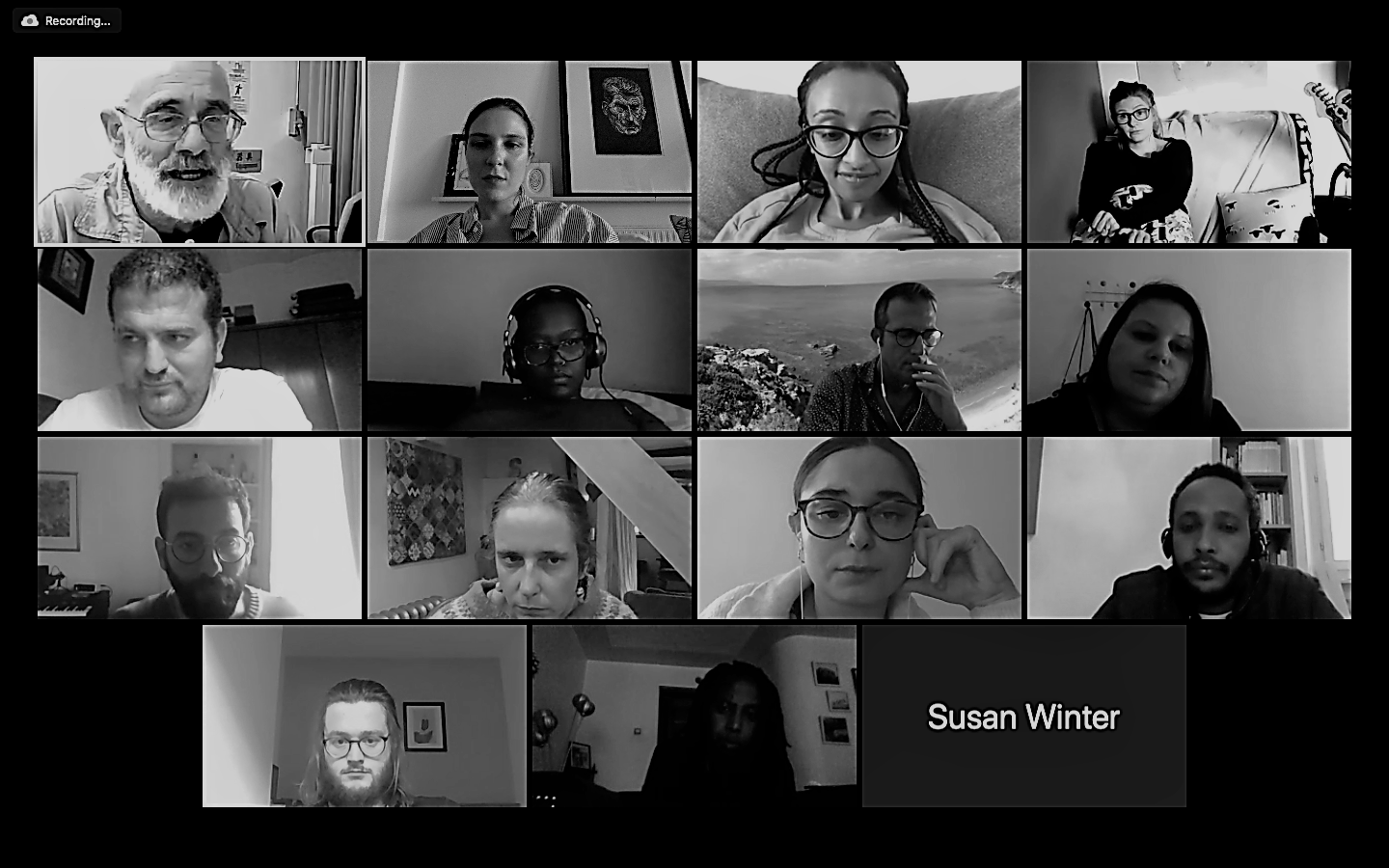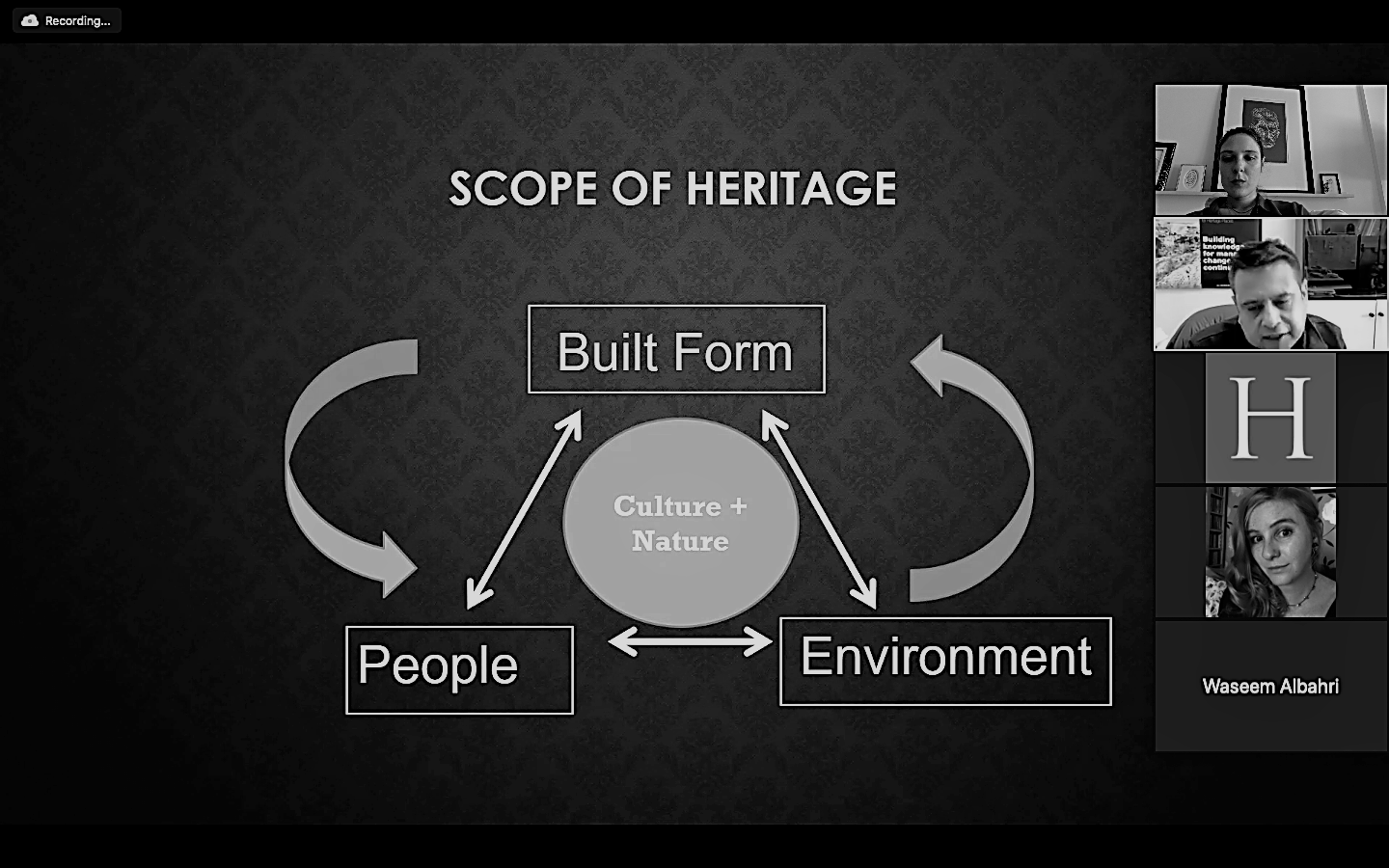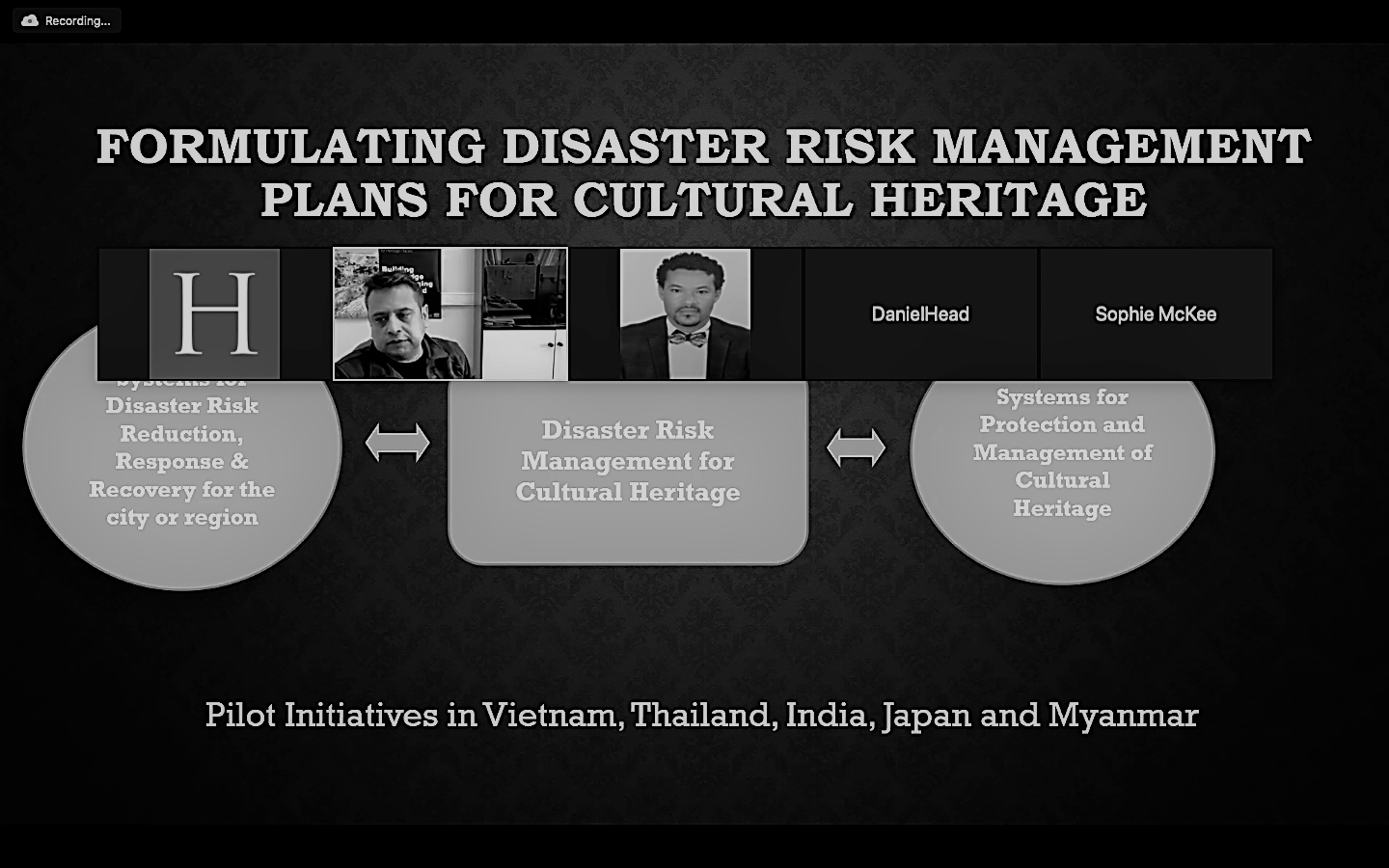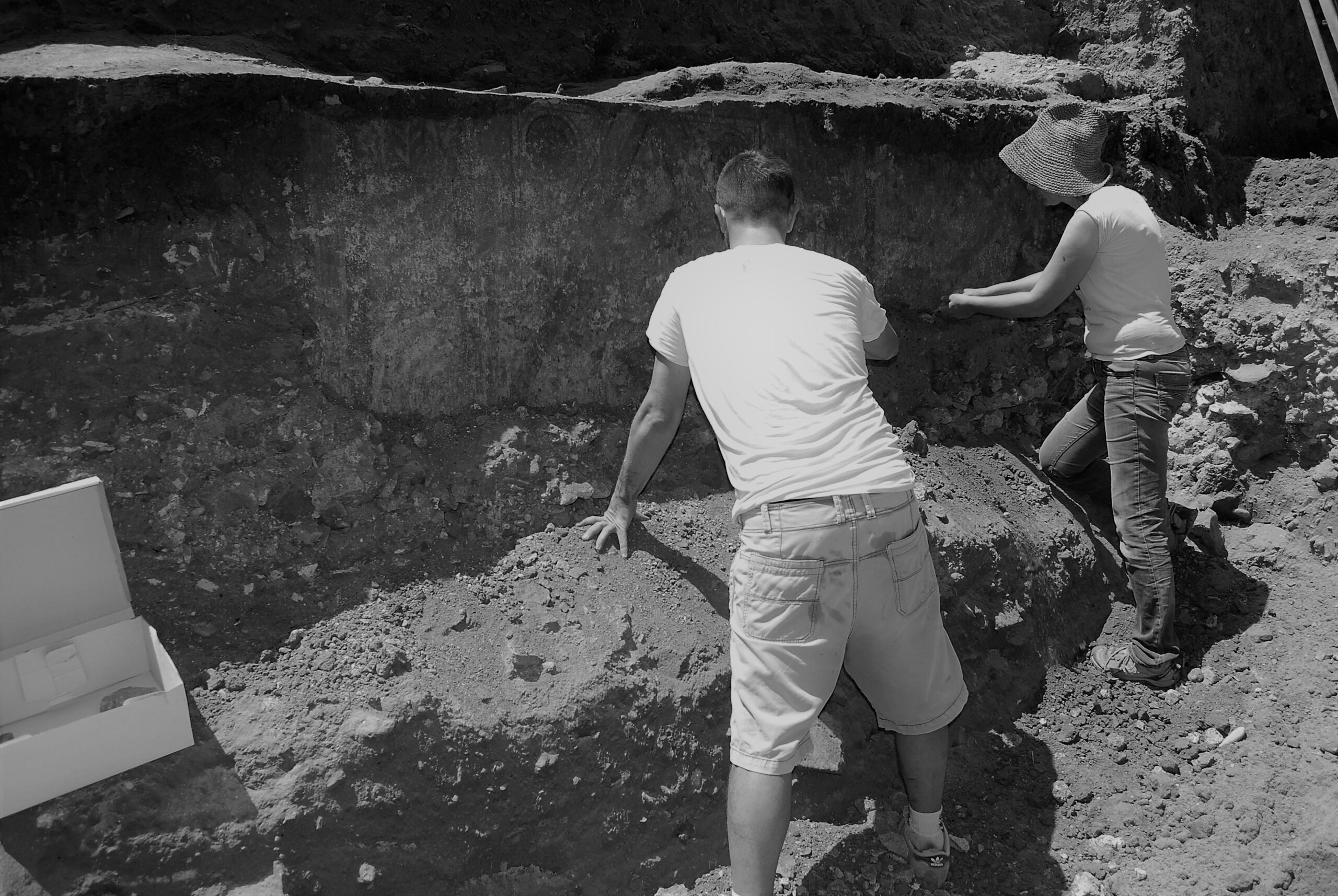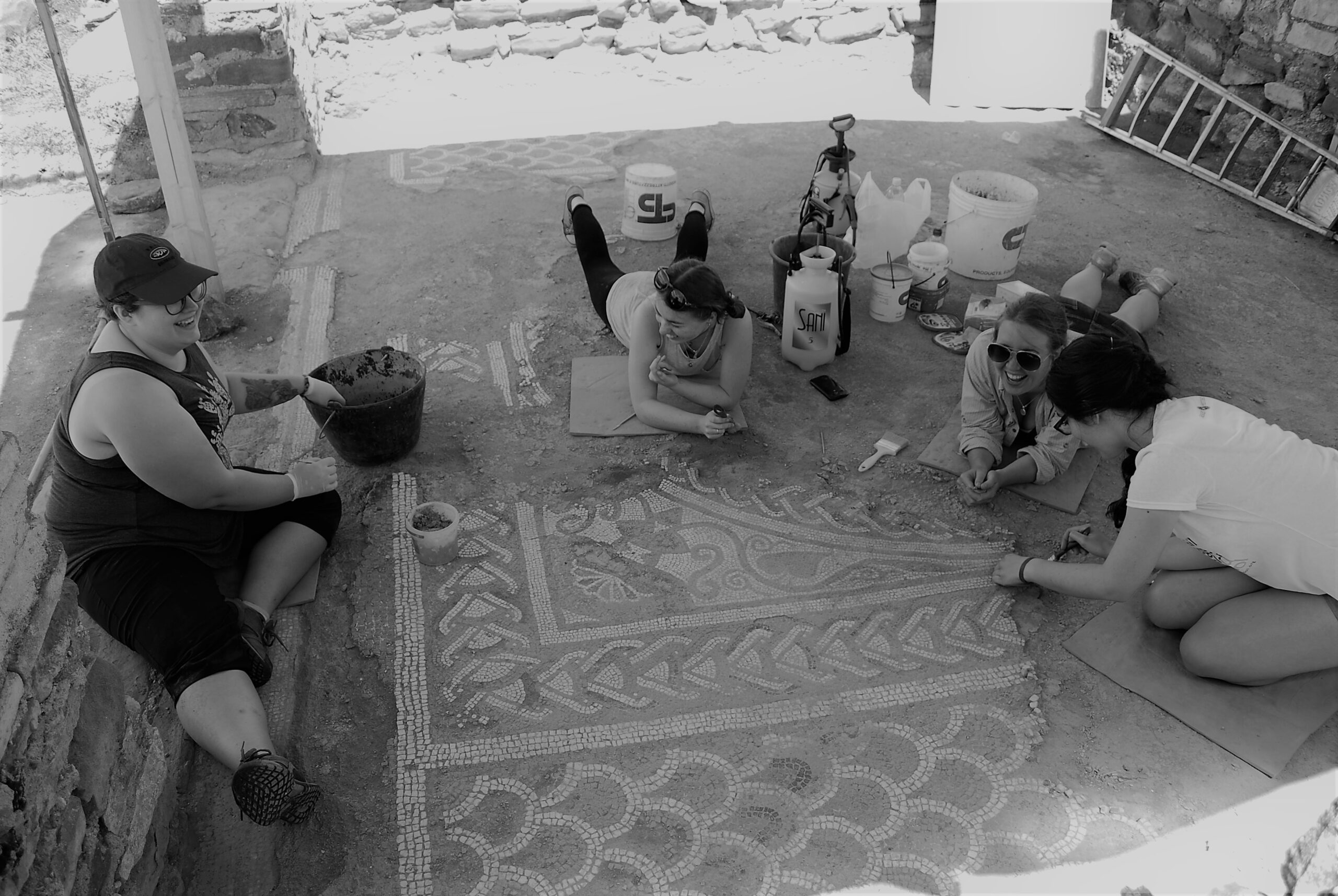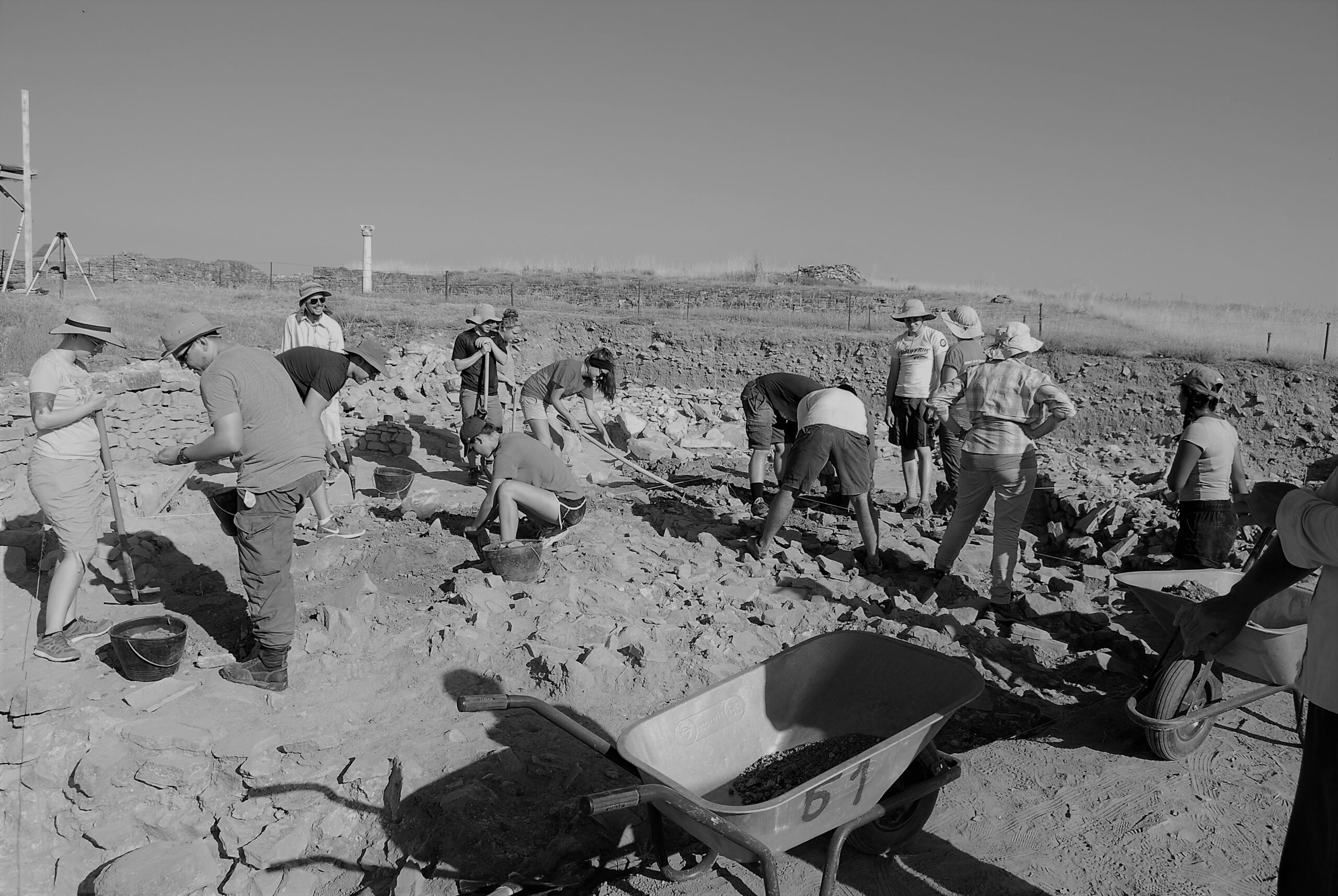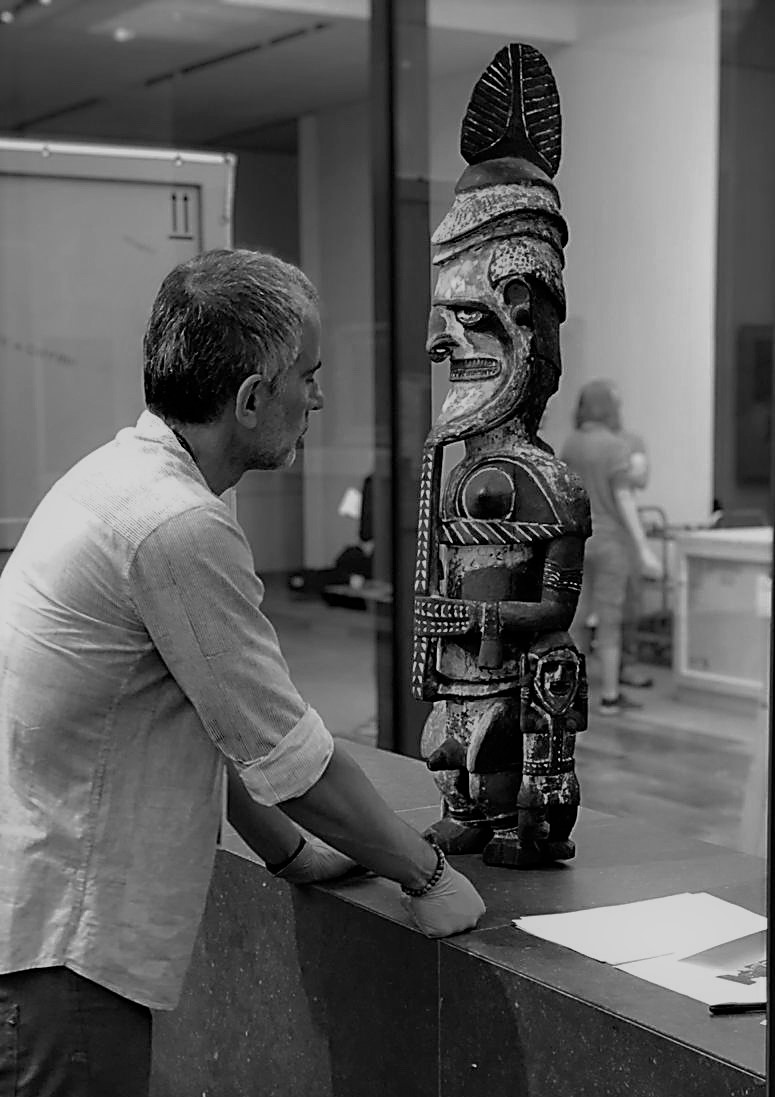: Uncategorized
British Council Cultural Protection Fund Workshop on Heritage Management
The Heritage Management Organization (HERITΛGE) in collaboration with the British Council’s Cultural Protection Fund in partnership with the Department for Digital, Culture, Media and Sport organized a 8-day workshop, with 11 meetings in total, to train 22 heritage managers of British Council staff and collaborative network in heritage management; engaging of local communities; heritage, risk and climate change; disaster management. The online workshop on “Heritage Management” took place 5 – 20 October, 2020. Distinguished in their field professionals and academics conducted the various specialist courses.
Course 1
Dr Evangelos Kyriakidis, fsa, Senior Lecturer in Aegean Prehistory at University of Kent, Canterbury and Director of HERITΛGE.
Introduction to Heritage Management
In this short workshop we go through the main element of what we manage: heritage values. Heritage values for the same piece of heritage are fluid, they change from person to person and through time, so much so that it is hard to talk about communal values, or shared values. We look at the main ways that values are constructed or are changing and we explore a little more the values of a piece of heritage we care about.
In the second part of the workshop we discuss outstanding universal values. This is a UNESCO introduced concept that can be very useful for any piece of heritage. Through this part of the workshop we aim to give confidence to heritage managers so that they understand the importance, the relevance and the functionality of the heritage they manage for the benefit of their constituencies. The relevance of the values of their heritage is a very important concept that can be liberating for heritage managers, not only in that they will quickly understand the ways to discuss their own heritage, but also ways to promote it and engage with multiple stakeholders in the management of local heritage.
Course 2
Dr Aris Anagnostopoulos, Honorary Lecturer at University of Kent and Public Director at HERITΛGE.
Dr Lena Stefanou, Cultural Organizations Management MSc at Hellenic Open University and Public Officer at HERITΛGE.
Community Engagement
Community engagement gradually becomes a mainstay in the public programs of heritage institutions worldwide. A variety of methods and good practices have been developed to successfully engage the bewildering variety of communities and publics that such institutions address. Still, the uncritical application of “toolkits” for effective engagement is perhaps not the ethically appropriate way to incorporate cultural difference in the field. In this online program, we aim to develop a different approach to community engagement, that is based on social (and art) research with community-led initiatives. Research-led practice can lead to collaborative design and collaborative actions that are better suited to the cultural and social particularities of each milieu and each specific group or community and its relation to others. This course draws from our long experience with community engagement through heritage and will discuss several examples from our own and other work.
During the course, participants will familiarize themselves with the context of community engagement through heritage, will discuss methodologies based on ethnography and oral history and will engage in practical exercises. The duration of the online course is three days, with six meetings in total, and enough time to complete assignments in between online meetings.
Course 3
Dr Peter Brimblecombe, Distinguished Research Chair Professor at Department of Marine Environment and Engineering, National Sun Yat-Sen University, Kaohsiung, Taiwan. Aerosol Science Research Center, National Sun Yat-Sen University, Kaohsiung, Taiwan.
Adjunct Professor at School of Energy and Environment, City University of Hong Kong. Emeritus Professor at School of Environmental Sciences University of East Anglia Norwich, UK.
Climate Change, Heritage and Risk
This course seeks to introduction students to the way in which weather, air pollution and climate change can affect our tangible heritage. It will distinguish the normal effects of weathering from those imposed by a changing climate or shifts that occur through air pollutant management. A sense of scale is important, so it is necessary to consider the individual materials that constitute heritage and the way the physical effects of weathering or corrosion and blackening by pollutants affects the artistic and evidential value; through to likely impacts on sites and the landscape that surrounds them. Climate change may particularly affect the context of heritage and the way visitors experience it. In a changing world, careful maintenance, stakeholder engagement and strategic planning become ever more important.
Course 4
Dr Rohit Jigyasu, Project Manager, Urban Heritage, Climate Change & Disaster Risk Management, Programme Unit
(2018-2020) at ICCROM and Vice President (2017-2020) of ICOMOS.
Disaster Management
Cultural heritage is increasingly vulnerable to disasters caused by natural and human induced hazards such as earthquakes, floods, fires, terrorism, looting etc. Climate Change has further exacerbated the frequency and intensity of disasters. Therefore, it is important to build the capacity of heritage institutions as well as well those who support disaster response and recovery so that they can take adequate decisions for pre-disaster mitigation and preparedness,
emergency response and post disaster recovery. This also requires understanding of the methodology for undertaking a multi-hazard risk assessment for prioritizing various actions.
Moreover, it is crucial to identify various stakeholders and ensure better coordination between heritage and disaster risk management sectors. The workshop aimed at raising awareness of the participants on the key principles and methodologies for managing disaster risks of cultural heritage sites and institutions.
Network Stories: Silvana Blazevska
Describe your organization and the unique work that it is doing. Who and what are affected by the work? How does/will the work impact people’s lives?
I am currently working at the National Institution Stobi (NI Stobi) as an archaeologist-senior curator. I graduated art history and archaeology at the Skopje University where I received my Phil and PhD in Classical Archaeology.
I was involved in the foundation of NI Stobi and I held the position of director between 2008 and 2017. This unique institution is responsible for management of the archaeological site Stobi, the best preserved ancient city from Roman and Late Antique periods in the R. of North Macedonia. The institution was created in 2008 by a governmental decision as an in depended institution under the Ministry of Culture with the main goal to provide overall research, protection, monitoring, proper preservation and presentation of the site of Stobi. NI Stobi has three departments: museum, conservation and administrative department with more than 30 permanently employed people with various fields of expertise.
The creation of NI Stobi was of crucial importance for development of the site in many aspects. For the first time in 100 years of explorations of Stobi, the activities regarding excavations, conservation, maintenance and presentation of the site were well planned and focused on the main goal: to provide the best protection and opportunities for sustainable development. During the process, we faced, and we are still facing many challenges: neglected site, limited human resources and especially experts for conservation, limited funds and rigid legislative regarding cultural heritage protection.
The creation of NI Stobi affected in positive way not just the site, but also people involved in various projects. Many young archaeologists and students of archaeology, art history, architecture and arts received training in field work during many excavations and conservation projects. Many of them continue to develop their skills and careers at Stobi or in other institutions. In the last 10 years Stobi became worldwide recognized site where students are offered basic practice in archaeological field work, including advanced methods in documentation and conservation of mosaic and ceramic finds, through summer schools and workshops organized in cooperation with Balkan Heritage Foundation from Bulgaria, various universities in the USA and Canada and Institute for Field Research.
NI Stobi and the projects affected the local communities in the vicinity. Each year many people are engaged on the projects, maintenance and presentation of the site. Local economy benefited from our work, especially surrounding municipalities, due to improved presentation of the site, which attracts more tourists in the region each year.
Tell us about a project that has benefited from the training you received from us? Why was the project important? Was there anything unusual or surprising about the execution of this project?
In cooperation with Balkan Heritage Foundation, NI Stobi received funds from J.M. Kaplan Foundation for creation of the Master Conservation Plan for the site. The plan aims to determine the general problems and risks that affect the site, priorities for intervention, and to propose the best strategy and conservation practice. The plan also includes strategy for fundraising and presentation in order to create favorable conditions for sustainable development. For that purpose, in February 2019, I attended the workshop organized by Heritage Management Organization: “Successful Fundraising for Heritage Managers: Strategies and Best Practices”. Both lecturers, Linda Hartley and Vivien Hoexter did excellent job in transmitting their knowledge in three days, to a group of people with diverse professional background and interest. On the other hand, it was an excellent opportunity to meet people and share knowledge and experience. I already had certain knowledge due to my previous training at the International Visitor Leadership Program for the Cultural Heritage Preservation organized by the USA State Department in 2012. Besides various issues, practice and policies for preservation of the cultural heritage, fundraising strategies and opportunities in the USA on various levels were also included in the program. The training in your organization supplemented and extended my previous knowledge on this topic.
The Master Conservation Plan is would be the first document of this kind created for archaeological site in our country, and I hope it will be applicable for other sites as well.
Has your organization worked on any other projects that are innovative, globally significant and can be replicated in a local market?
Our everyday work dedicated on protection of Stobi’s cultural heritage is globally significant. Actually, the model of National Institution Stobi was new and innovative, maybe not globally, but for sure within the country. The concept can be replicated on other world heritage sites of exceptional value in the region, especially where the established state system and network of institutions for heritage protection cannot provide overall protection, everyday monitoring and presentation due to great number of monuments under their jurisdiction. The established system at the NI Stobi, allows well organized and planned activities to avoid major problems in heritage protection such as discontinuity in the excavations and preservation, maintenance, proper presentation etc.
This model proved to be the best solution to address various problems regarding heritage protection and promotion and especially raising awareness for the importance of heritage and its preservation. The history and the heritage represent the main core of every modern society and it is important to use our best knowledge and resources to preserve it for future generations. We are focused on achieving this through our activities: guides who are telling the story of the ancient city of Stobi to the visitors, especially school children, through promotions of our projects on various media, through international field schools and workshops, through scientific conferences etc. The unique model of NI Stobi is already recognized in the region for its results and there is a noticeable difference at the site. In 2012 the site was on the World Monument Watch List and we use the opportunity to organize various activities to promote the importance for the heritage protection among the youngest population by their direct involvement in the workshop for making mosaics and paintings inspired by Stobi. Through game and fun, they learned why Stobi is important place. More events of this kind are the best for promoting the values of our cultural heritage.
What are the global issues that your project addresses (e.g., fighting climate change, preserving heritage and culture, promoting local participation)?
NI Stobi is trying to extend its activities on globally relevant issues. Few years ago we participated in the evaluation project regarding the impact of the climate change on the cultural heritage as one of the case studies. We manage to turn the attention of the responsible entities in the country. Daily monitoring and records of the changes on the Stobi’s heritage are important for determination of the risk factors and subsequently the action plan for prevention. Many of the determined risks: flooding of the river Crna, air pollution, and various problems induced by climate changes etc., should be supplemented by scientifically based analysis, which is our further focus of interest. Due to limited resources we should seek for partnership with experienced foreign institutions.
Strategic Planning for Heritage Managers | Milica Tanasijevic
Strategy is considered to be the queen of the managerial disciplines and a key success factor in all areas of human activity. In this respect, there are numerous examples of how a successful strategy can lead to success, even in cases where resources are limited and are not overwhelmingly superior to those of competitors.
The “Strategic Planning for Heritage Managers” Workshop, instructed by Alexandros Papalexandris, Assistant Professor at the Athens University of Economics and Business, in May, aimed to provide the tools and methodologies to effectively address the topics of successful strategy formulation and implementation in organisations managing cultural heritage in the contemporary complex environment.
Milica Tanasijevic, Architecture & Planning Professional at SEE Heritage Network, shares her experience with HERITΛGE’s world acclaimed Strategy Workshop.
Describe your organization and the unique work that it is doing. Who and what are affected by the work? How does/will the work impact people’s lives?
Give us some information regarding your educational/professional background and your current position.
Describe the main values that you have gained from the specific workshop.
Tell us about a project that will be benefited from the training you received from us? Why is the project important?
Has your organization worked on any other projects that are innovative, globally significant and can be replicated in a local market?
What are the global issues that your project addresses (e.g., fighting climate change, preserving heritage and culture, promoting local participation)?
Network Stories: Theofanis Karafotias
Describe your organisation and the unique work that it is doing. Who and what are affected by the work? How does/will the work impact people’s lives?
Louvre Abu Dhabi dates back to 2007, when France and the United Arab Emirates joined forces to develop an institution rooted in the universal human values. For Louvre Abu Dhabi, “universal” means focusing on all values that unite us, the stories of mankind: through creativity, through cultures, and through civilisations. This has been the guiding principle for the museum ever since its foundation, combining French architectural design with the Arabic cultural heritage, along with choices of works for the collection and how they can be combined in the galleries to tell the story of mankind.
As the first museum of this kind in the Region, it aims to introduce the local visitors to a universal approach of arts and cultures and to showcase to the international public the UAE’s bold vision of cultural progression and openness.
Tell us about a project that has benefited from the training you received from us? Why was the project important? Was there anything unusual or surprising about the execution of this project?
My role in Louvre Abu Dhabi is related to the Preventive Conservation Unit, meaning that I am responsible for ensuring the safety of a diverse and high value collection in terms of climatic parameters, display conditions and accessibility. This task becomes even more complicated when taking into account a big part of the display consists of short and long-term loans from prestigious French museums as well as regional partners. The challenges of the day-to-day operations focus on the high visitation numbers and the specific, often extreme, climate conditions of the Middle Eastern environment. On top of that, the museum emphasises the visitor experience, offering high quality services to the public, so the presentation and maintenance of the collection is of significant value and priority. As a relatively new institution (open to the public for 2 years now), the teams are still setting the policies and procedures for the operation of this significant organisation, which bares the brand name of one of the most important museums worldwide.
Has your organisation worked on any other projects that are innovative, globally significant and can be replicated in a local market?
The year 2019 was celebrated in UAE as the Year of Tolerance. Tolerance has been emphasised as a universal concept and a sustainable institutional endeavour, with dialogue and coexistence having a positive impact on society. Within this platform, Louvre Abu Dhabi has received the Universal Regions Hall award. The museum chooses to display in the same showcases a sculpture of Virgin Mary with Child, a Quran and a figurine of Buddha. According to the narrative of this gallery, religions in the past were spread beyond geographical borders as we know them today, and that’s what makes them universal; in a way that they share much more in common than most of us care to believe. This notion of shared values can be an example to post-conflict societies, to eliminate prejudice and reduce the gap among different social groups.
What are the global issues that your project addresses (e.g., fighting climate change, preserving heritage and culture, promoting local participation, )?
In times where the phenomena of nationalism, racism and Islamophobia are headline news on a daily basis, Louvre Abu Dhabi chooses to embrace all cultures and religions. The narrative is following a chronological order rather than being separated geographically. Through the galleries, the visitor can discover how different civilisations interlaced through the eras and evolved in parallel, based on common human needs and principles. Louvre Abu Dhabi is proudly opposed to any type of violence, reflecting the vision and the open-mindedness of the founder of the UAE, Sheikh Zayed bin Sultan al Nahyan. His views, that any despicable action under the name of religion should be condemned, are still venerated today.
Strategic Planning for Heritage Managers | Banafshe Esfahani
Strategy is considered to be the queen of the managerial disciplines and a key success factor in all areas of human activity. In this respect, there are numerous examples of how a successful strategy can lead to success, even in cases where resources are limited and are not overwhelmingly superior to those of competitors.
The “Strategic Planning for Heritage Managers” Workshop, instructed by Alexandros Papalexandris, Assistant Professor at the Athens University of Economics and Business, in May, aimed to provide the tools and methodologies to effectively address the topics of successful strategy formulation and implementation in organisations managing cultural heritage in the contemporary complex environment.
Banafshe Esfahani, Cultural Program Officer German Embassy Tehran and one of 850+ professionals and cultural heritage managers, benefited from the worldwide acclaimed training programs of HERITΛGE, shares her experience.
Describe your organization and the unique work that it is doing. Who and what are affected by the work? How does/will the work impact people’s lives?
Give us some information regarding your educational/professional background and your current position.
Describe the main values that you have gained from the specific workshop.
Tell us about a project that will be benefited from the training you received from us? Why is the project important?
Has your organization worked on any other projects that are innovative, globally significant and can be replicated in a local market?
What are the global issues that your project addresses (e.g., fighting climate change, preserving heritage and culture, promoting local participation)?
Cultural Heritage Conservation as a Driver For Tourism Development
Going one year back, the first international scientific and practical symposium “Cultural Heritage Conservation as a Driver For Tourism Development” was held in Samarkand on December 4-5, 2019. The forum was organized by the State Committee for Tourism Development, the Ministry of Culture of Uzbekistan, the Institute of Tourism Development under the State Tourism Committee.
It was a great honor for us that the “Institute for Tourism Development under the State Committee for Tourism” invited the Heritage Management Organization to participate to the symposium. Professor Vassilis Ganiatsas represented HERITΛGE at the symposium and shared his insight on “Authenticity and Historical Reconstruction”, proposing an ontological approach to their repercussions in Cultural Heritage Management, while Aris Anagnostopoulos instructed the workshop “Local Communities & their role on preserving Cultural Heritage” to participants from the UK, Italy, Greece, France, Germany, India, France, Japan and China.
The purpose of the event was to preserve and promote the historical, architectural, archaeological and cultural heritage of Uzbekistan, in particular, Samarkand; to establish long-term cooperation with foreign experts in the field of reconstruction and restoration of tourist sites, to develop strategic proposals and recommendations for improving restoration work and further preservation of architectural heritage, development and dissemination of new forms of cultural tourism, etc.

